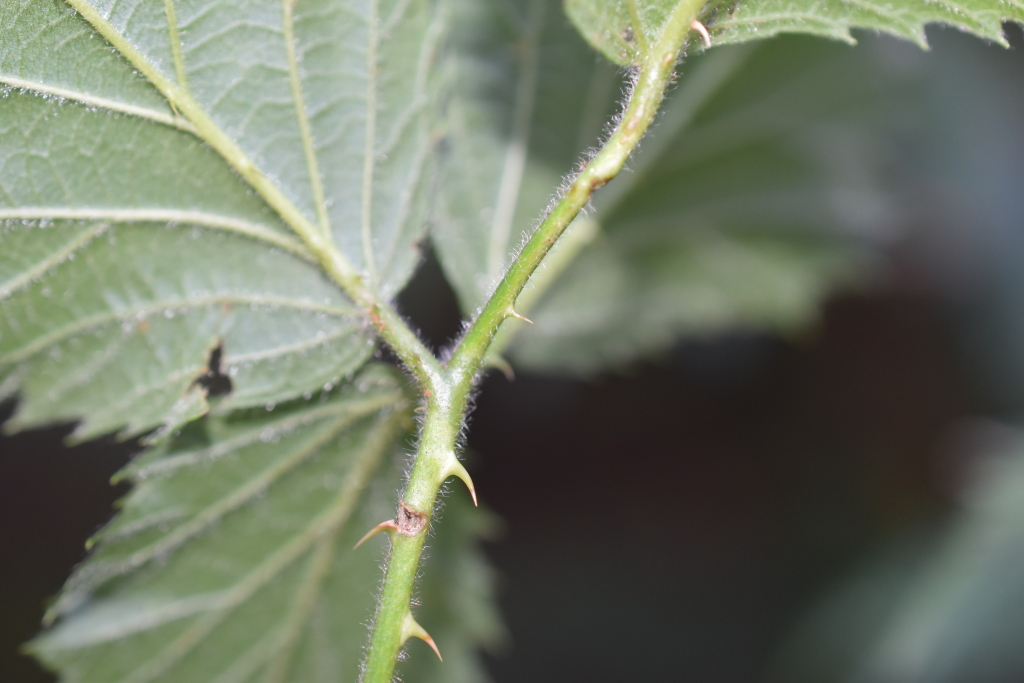Rubus laciniatus
Willd. Cut-leaf BrambleErect or sprawling, semi-deciduous, much-branched shrub; stems angular, glabrous or sparsely pilose, bearing many falcate prickles to c. 6 mm long. Leaves mostly 5-foliolate, occasionally 3-foliolate; leaflets lanceolate to ovate or elliptic, mostly 2–6 cm long, 1–4 cm wide, base cuneate to decurrent, margins toothed or deeply and irregularly cut into narrow lobes, upper surface green, glabrescent, lower surface green, sparsely pilose or tomentose; stipules entire or deeply lobed. Flowers in terminal leafy panicles. Sepals pilose and tomentose, laciniate, armed with prickles; petals more or less elliptic, often trifid at apex, white or pink. Fruiting head obloid to globose, to c. 10 mm diam.; fruit black, remaining on receptacle when ripe. Flowers Nov.–Feb.
VVP, GipP, OtP, WaP, Gold, CVU, GGr, EGU, HSF, HNF, OtR, Strz, MonT, VAlp. Also SA, NSW, Tas. Widespread in Britain and in north-western Europe. Widely distributed, mostly in higher rainfall parts of the State.
Plants with shallowly toothed leaflets (often only 3 per leaf) have previously been included in Rubus laciniatus subsp. selmeri. This subspecies is no longer recognised in Australia despite its apparent distinction from the readily recognisable form with deeply lobed and almost fern-like leaves as there are a range of intermediate leaf types between these two extremes.
Jeanes, J.A.; Jobson, P.C. (1996). Rosaceae. In: Walsh, N.G.; Entwisle, T.J., Flora of Victoria Vol. 3, Dicotyledons Winteraceae to Myrtaceae, pp. 556–585. Inkata Press, Melbourne.
 Spinning
Spinning


